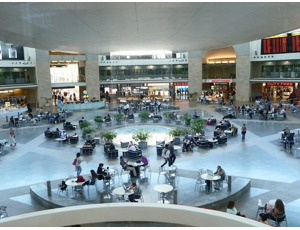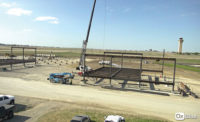
The Israel Airports Authority has issued an international tender for a fourth concourse at the country’s main international airport in order to accommodate growing passenger traffic.
The cost of the new addition at Ben Gurion International Airport, outside of Tel Aviv, is estimated at $190 million. IAA expects to decide on the winning bidder by mid-2014. The timetable calls for completion of the project at Terminal 3, the airport's main international hub, within three years.
The terminal, which opened in 2004, was designed by Skidmore, Owings & Merill, Moshe Safdie & Associates and TRA, a unit of Black & Veatch, with several Israeli architects of record.
The new terminal was built to serve about 10 million passengers per year.
International traffic at Ben Gurion is expected to surpass 14 million this year and will rise to 17 million by 2018, says the authority. The expansion will enable the airport to handle up to 20 million passengers annually.
“The expansion will enable us to deal with the expected growth in traffic in the coming years as a result of the introduction of low-cost carriers to the Israeli market,” says Shmuel Zakai, the airport's managing director.
Earlier this year, Israel signed with the European Union an "open skies" treaty, which is set to boost traffic to and from Europe, particularly among low-cost carriers, when it takes effect next year.
Lufthansa and other Europe-based carriers recently announced expansion of routes to Israel starting in early 2014, say Israeli published reports. El Al, Israel's national airline, also plans to launch, in March, low-cost routes to and from Budapest, Berlin and Prague.
The Tourism Ministry predicts an increase of 250,000 tourists from Europe to Israel in the first year of the agreement's implementation.
The 17,000-sq-meter concourse expansion will include eight connecting bridges, three of which will be for large planes such as the Airbus 380. It also will have two exit gates to buses, 12 parking slots for aircraft, a lobby, cafes and shops.
In early 2014, the authority also is due to complete a $220-million upgrade and expansion of runways to accommodate the doubling of air-traffic movements.


Post a comment to this article
Report Abusive Comment